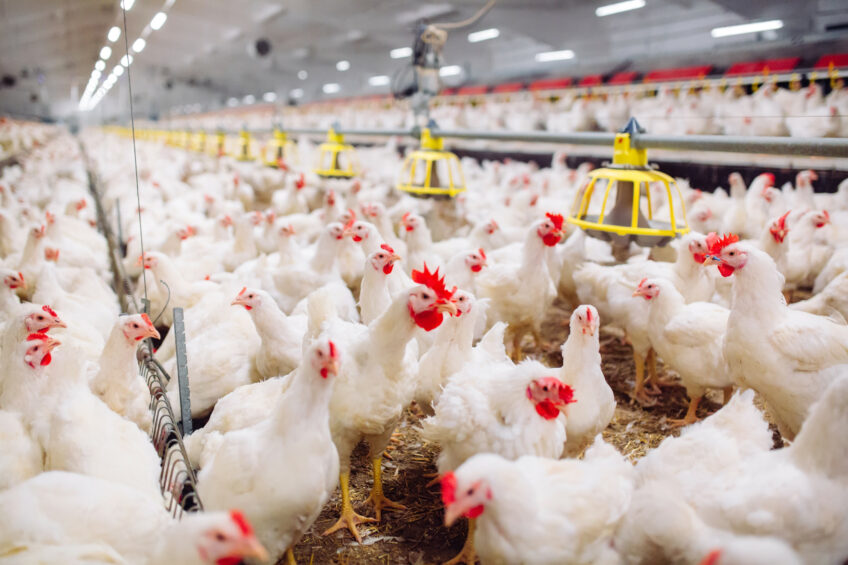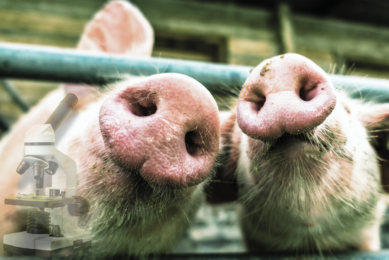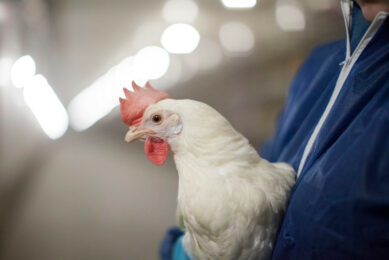Bacterial lameness and the role of probiotics

A re-emerging challenge in modern broiler production is the occurrence of bacterial lameness, with new research indicating that its prevalence is strongly linked with gut health issues. As animals in modern production systems are steadily pushed to achieve the best technical performance, gut health is under continuous pressure and should thus be actively managed. This includes feed interventions, with probiotics as compelling tools to support the animal from within.
WORLD OF MICROBES SPECIAL 2024 – read all articles
One of the most common forms of bacterial lameness in broilers is femoral head necrosis, whereby bacterial infection delivered via the bloodstream is a prerequisite. Importantly, overt intestinal damage is not required: translocation is linked to general dysbacteriosis and consequently a decreased gut integrity. The latter includes a reduced functioning of the tight junctions. These multiprotein junctional complexes act as the seals between the epithelial cells, normally forming an effective barrier between the bloodstream and the intestinal space. However, when their integrity is compromised, bacteria from this intestinal space can seize the opportunity to pass into the systemic circulation. This facilitates the transportation of these bacteria to different parts of the animal, where they can then cause infections in locations they otherwise would not reach.
Prime locations for such infections include the cartilage of rapidly developing bones, especially those that are under high physical stress. Infections happen much more easily in such cartilage due to micro-fractures, also known as osteochondrotic clefts, which occur as a result of a rapid development combined with a high stress force. These conditions are commonly present in femoral heads of the lower limbs. As such, femoral head necrosis is often considered the most prevalent type of bacterial lameness in broiler flocks, especially for young birds.
Probiotics as a management tool
Over the last few years, Enterococcus spp. have been identified as one of the most prominent translocators and causative agents of bacterial lameness. The translocation and subsequent infection often takes place in the first week of life, whilst the bacteria remains present in the intestines for multiple weeks. Various factors play a role in combating the challenge, going from hygiene management to feed formulation and beyond. Diving deeper into the feed side of things from a probiotic point of view, there have been 2 main ideologies: either combat Enterococcus specifically, or reduce the risk of translocation itself by securing general gut health.
Although it might make sense to focus on Enterococcus directly, there are some considerations to keep in mind. First of all, the majority of research where specific probiotics have been pitted against Enterococcus has been conducted in vitro. Despite the range of tested methods, in vitro can never fully duplicate in vivo situations. It is thus an extremely limited indication of probiotic efficacy in the field. Secondly, targeting Enterococcus specifically has its downsides as well: there’s not one Enterococcus strain identified as the sole responsible for all bacterial lameness, whilst Enterococcus as a bacterial genus is not only pathogenic. It compromises multiple bacterial strains which are part of a normal, commensal and well-functioning microbiota. Adding probiotics that aim to reduce Enterococcus as a whole is thus not advisable, whilst those that only reduce specific Enterococcus strains will not be able to cover all potential pathogenic strains. Lastly, bacterial lameness can also be caused by other bacteria besides Enterococcus. As such, there is little sense in focusing on only this bacterial genus when aiming to combat the broader challenge of bacterial lameness.
Alternatively, there are probiotics available that protect and support general gut health. Not only do they guard and improve gut functioning, but their non-selective action regarding the integrity of tight junctions means that they’ll aid in reducing translocation altogether – regardless of the bacterial type trying to do so. Bacterial lameness is also not the only resulting issue of bacterial translocation and it is thus important to minimise all translocation, not only that of Enterococcus. Lastly, keep in mind that translocation is just one of the possible outcomes of dysbacteriosis: technical performance in itself will also be affected, as gut functioning decreases when dysbacteriosis occurs. Taken together, these arguments make it clear that probiotics that focus on reducing dysbacteriosis itself make the most sense, supporting both animal health as well as performance in the process.
Bacillus licheniformis vs. bacterial lameness
An example of a feed additive focusing on general gut health is B-Act. It contains a unique probiotic Bacillus licheniformis strain, selected specifically to aid in the prevention and mitigation of dysbacteriosis. Consequently, the risk of bacterial lameness is reduced as well. To test the theory, an in vivo trial was set up to evaluate the effect of B-Act in a bacterial lameness trial model. A total of 120 Ross 308 broilers were divided into 3 treatment groups and housed in pens with an uneven surface (wire floor). The latter condition was added to increase the stress on cartilage of joints and bones, aiming for a higher chance of the mentioned osteochondrotic clefts and thus an increased number of infection sites. Simultaneously, all animals received a challenging diet (more fibrous, less digestible), aimed at inducing dysbacteriosis and subsequent bacterial translocation. The difference between the groups was that they either received B-Act from start to finish (1.6 x 1012 CFU/ton of feed), a treatment dose of enrofloxacin from day 38 to day 47 (10 mg enrofloxacin/kg body weight) or nothing at all (control group). The trial lasted for 53 days. Both the antibiotic treatment as well as the addition of B-Act mitigated the level of lameness significantly (P<0.05). Last but not least, the onset of the first cases of lameness were 5 to 6 days later in the treatment groups compared to the control.
Figure 1 – Lameness percentages on day 53 of all 3 groups.

Going above and beyond
Keeping the above in mind, it is clear that bacterial lameness is firmly rooted in gut health. Managing dysbacteriosis is thus essential in the prevention and mitigation of bacterial lameness. To do so, multiple factors play a role, including feed additives such as probiotics. Within this group, those probiotics focusing on general gut integrity make the most sense. B-Act is a strong candidate that follows this logic, with proven efficacy going above and beyond its impact on technical performance.







